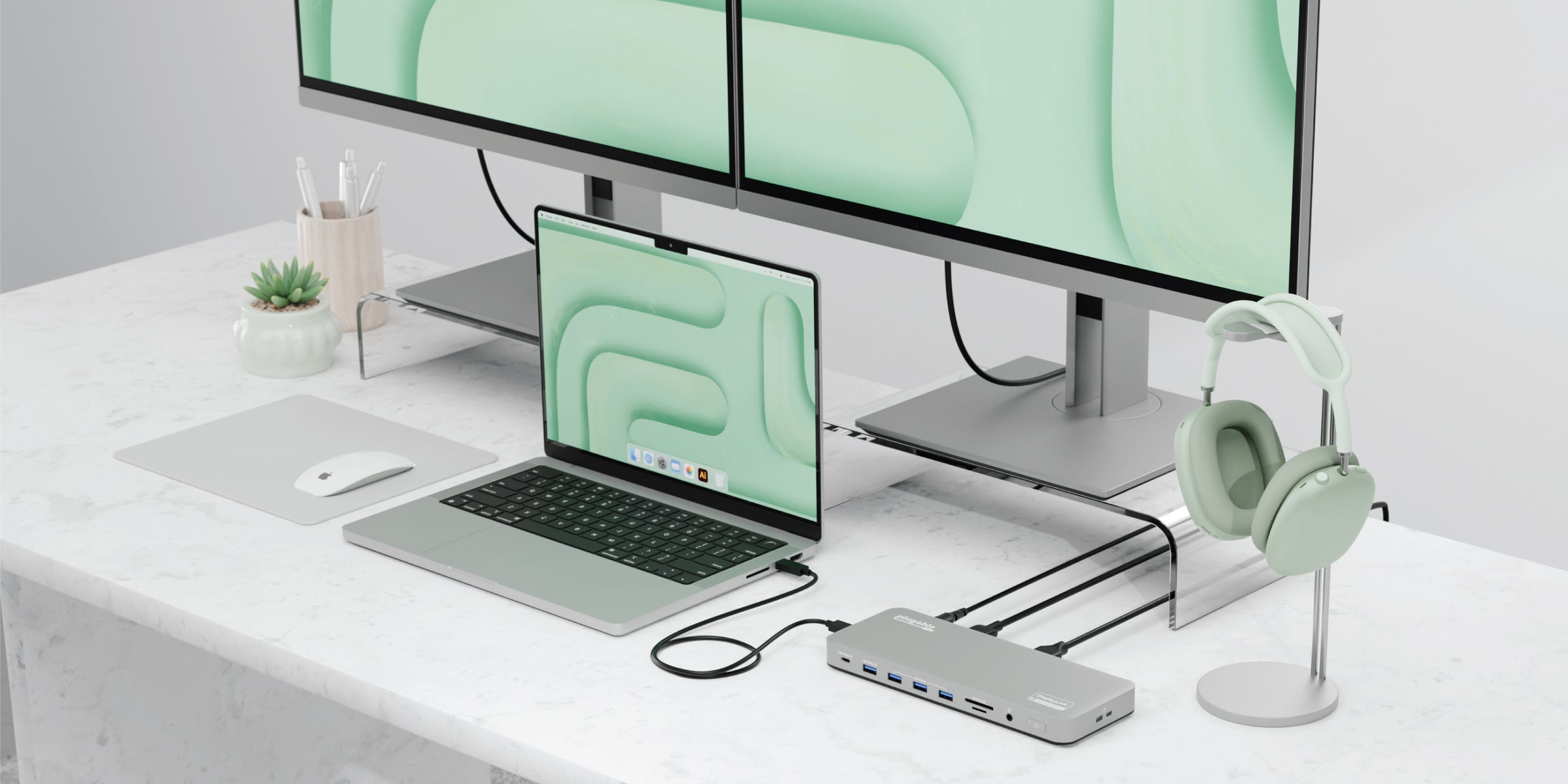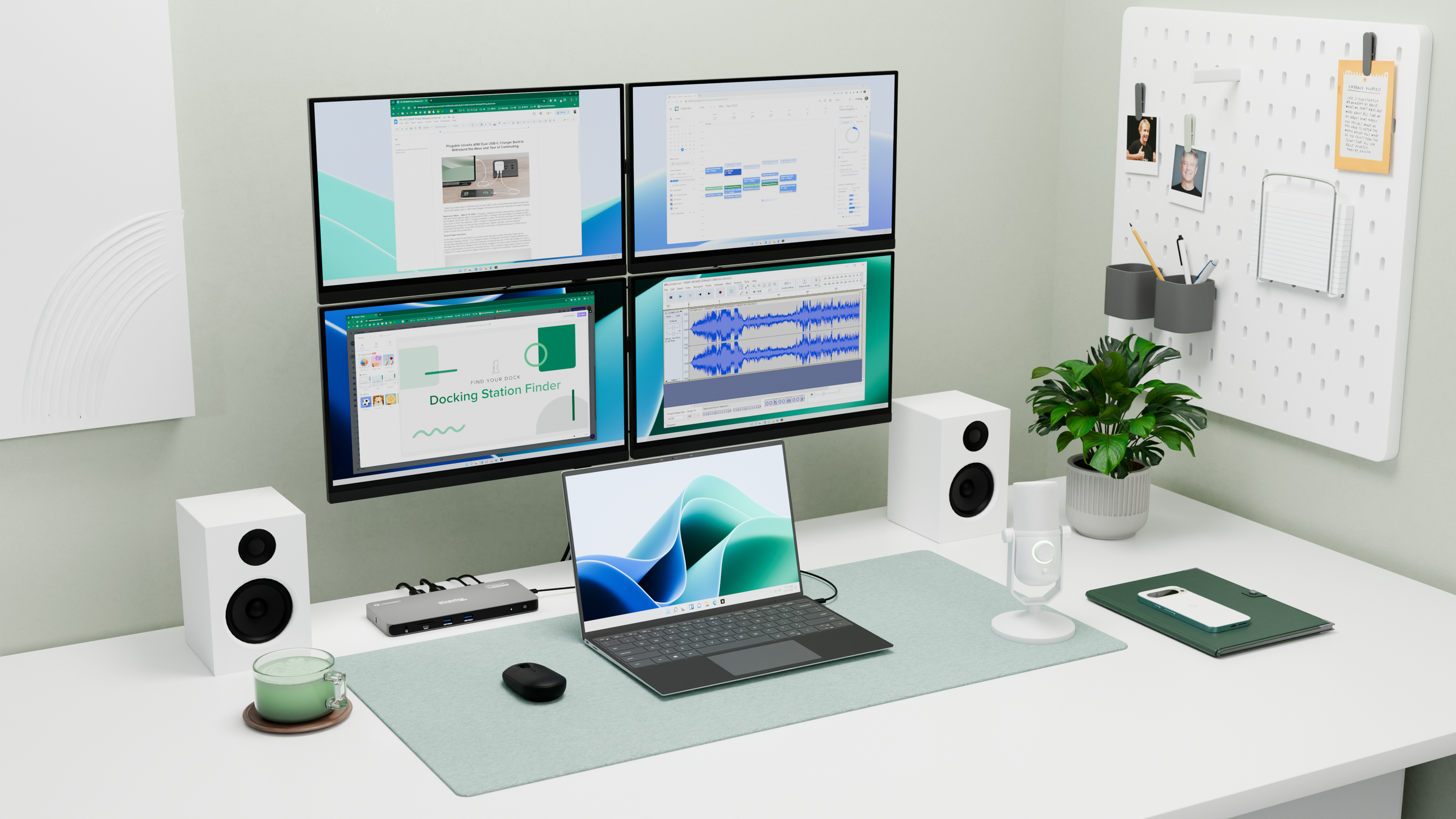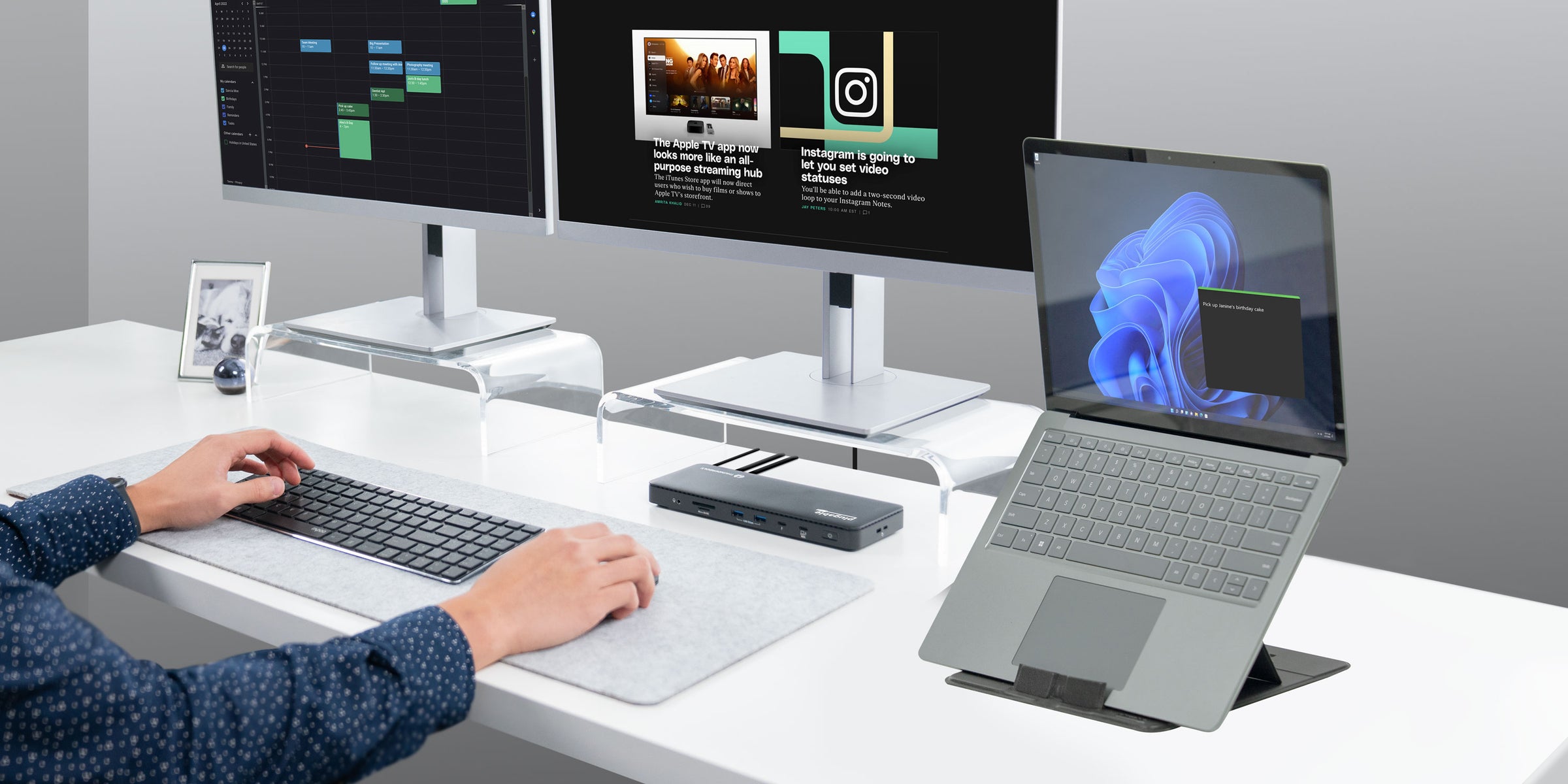Boosting Productivity with Universal Docks and Multi-Screen Setups
Lynn Smurthwaite-Murphy | November 11, 2024
How we work has evolved dramatically in recent years, driven by a rise in remote and hybrid work, increased digital tools, and a greater demand for efficiency. Today’s office worker needs to seamlessly transition between tasks, manage multiple applications, and stay productive, regardless of location. These shifts in the workplace have made multi-screen setups and universal docking stations essential tools. Here’s how the modern work environment is changing and why these tools are now critical.
The Changing Landscape of Work

In the last five years, hybrid work has gone from an exception to a norm. A 2023 Gallup poll revealed that 59% of workers in the U.S. are now in hybrid roles, and many spend half or more of their week working remotely. Meanwhile, the use of digital applications has multiplied. A study by Statista found that the average employee now juggles 10 to 12 applications daily—a number that has risen substantially in the last decade as businesses adopt specialized tools for project management (such as Trello or Asana), communication (like Slack or Microsoft Teams), and analysis (such as Excel or Tableau). This increase in application use has naturally led to more screen real estate needs, as employees need to view multiple programs simultaneously to maintain their productivity.
Why Multiple Screens Matter

With the shift to remote and hybrid work, multi-monitor setups have become a game-changer. A study by the University of Utah found that workers using two screens can be up to 44% more productive than those with a single display. One reason is that multiple screens reduce the need to constantly switch between applications and windows, which can lead to “attention residue”—the mental hangover that occurs when you switch tasks, slowing down cognitive function and performance. This means that by having a dedicated screen for each major task, workers can streamline their workflow and avoid the negative effects of task switching, whether handling a customer call on one screen while pulling up relevant data on another or referencing an email thread while drafting a report.
In video conferencing, multiple screens are especially beneficial. With one screen dedicated to the video call, employees can maintain engagement with the meeting while keeping relevant files, presentation slides, or notes open on another display. This setup ensures they don’t miss critical points while providing quick access to information, making meetings more efficient.
The Role of Universal Docking Stations
While multiple screens enhance productivity, the universal docking station makes this setup feasible in today’s varied IT landscape. Enterprise device fleets are no longer uniform—IT departments now manage a diverse mix of laptop brands, operating systems, and CPU/GPU configurations. Many workers need a solution that works across devices, whether using a Macbook in the office, a Windows laptop at home, or a Chromebook in a coworking space.
Universal docking stations enable this flexibility, serving as the connective bridge for a multi-screen setup that can support nearly any device. The right docking station offers plug-and-play support, allowing users to instantly connect to multiple monitors, network access, and other peripherals without wasting time on configuration or compatibility issues. This compatibility is crucial as today’s workforce is increasingly mobile, often shifting between different devices and operating systems depending on where and how they work.
Supporting Statistics for the Multi-Screen Workplace

The evidence for the productivity benefits of multi-screen setups is compelling. A Jon Peddie Research report found that dual monitors can increase productivity by 20-30%, with higher engagement and fewer distractions cited as contributing factors. Meanwhile, a report from Owl Labs reveals that employees now spend an average of 10 hours per week on video calls—a 500% increase compared to pre-pandemic levels. With this rise in virtual meetings, having a dedicated screen for video conferencing and another for relevant files or applications has become more than a luxury—it’s a necessity.
The Benefits of Universal Docking in Hybrid and Remote Work
For hybrid and remote workers, universal docking stations offer several key benefits that make them indispensable:
- Seamless Connectivity Across Locations: Workers can set up a consistent workspace in multiple locations with a single universal dock, simplifying transitions and saving time.
- Adaptability for Varied Device Needs: Universal docks accommodate different operating systems, allowing workers to use one dock across personal and work devices.
- Efficient Desk Management: With fewer cords and better organization, universal docks help minimize desk clutter, positively impacting clarity and efficiency.
- Future-Proof Flexibility: By investing in universally compatible equipment, companies ensure their infrastructure can adapt as employees’ device preferences and needs change, minimizing the need for frequent upgrades.
The modern office is no longer defined by a static desk in a single location. With the rise of remote work and the ever-growing demand for productivity, multi-screen setups and universal docking stations have become essential. These tools empower employees, putting them in control of their work environment, enabling them to manage the complexity of today’s digital workflows, engage more effectively in virtual meetings, and stay productive across various locations. Universal docking stations, in particular, serve as the linchpin of this setup, enabling a seamless, flexible, and powerful multi-screen experience that aligns with the demands of modern work.
As the workspace continues to evolve, these tools will remain indispensable for a more efficient, connected, and productive workforce.
View Other Articles in Category
Related Articles
- What’s the Best File Transfer Cable Solution? Let’s Compare
- How to Choose Between a Docking Station and a Hub
- Plugable Products Tested and Approved for the Apple M5 MacBook Pro
- What You Need to Know About Running Five or More Displays on a Single Computer
- Head-to-Head: Plugable UD-ULTC4K vs. Dell WD19S


Loading Comments